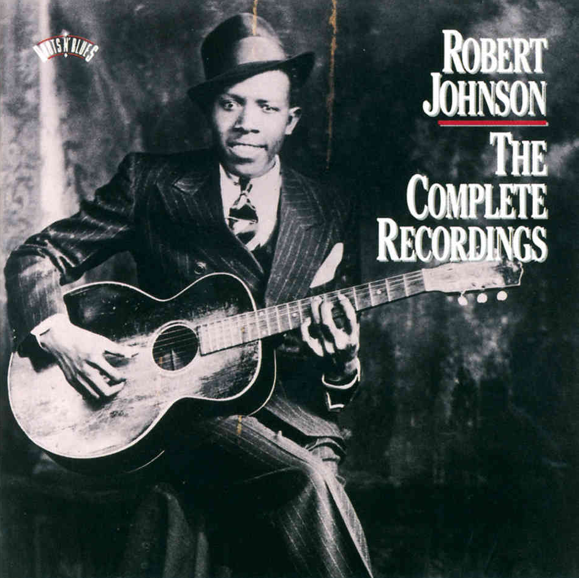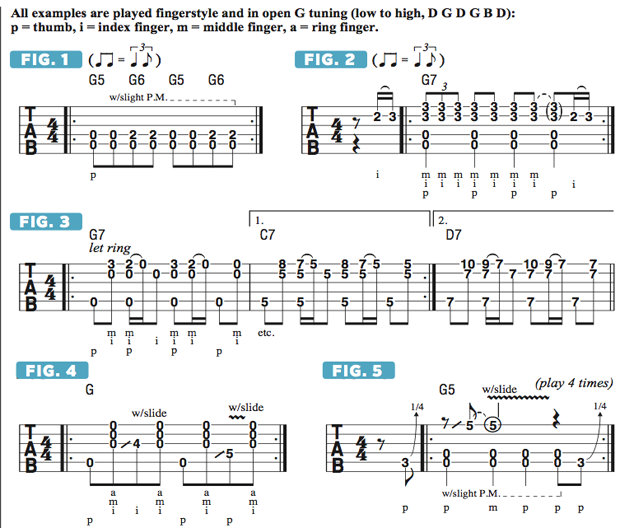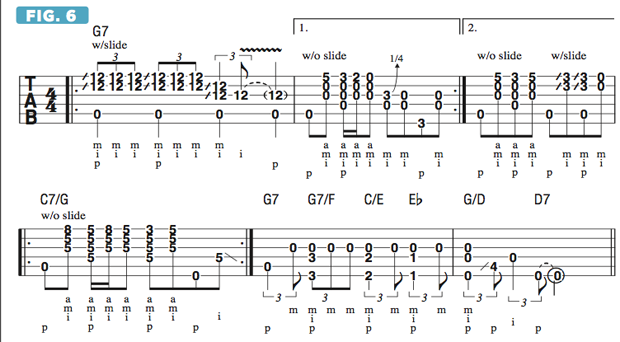Robert Johnson's Ferocious Guitar Style

Regarded as one of the greatest guitarists of all time, Delta blues wizard Robert Johnson recorded only 29 songs (plus 13 alternate takes, in two sessions) during his 27 years of life.
They were cut when he wasn’t playing for tips on street corners, in juke joints or in front of barbershops and other commercial establishments.
In his youth, Johnson copped licks directly from Son House, who later in his life vividly recalled how Johnson developed from a bad guitarist to a “master” in just two years.
Ike Zinnerman allegedly inspired Johnson to practice guitar in a graveyard at night while perched atop tombstones. These are only a few of the stories that helped cultivate the legend that Johnson earned his chops by making a deal with the devil.
Johnson played his Gibson L-1 using a thumb pick and occasionally used a slide. His recordings were largely unknown until they were rereleased in 1961. Their raw intensity and gut-wrenching soulfulness laid the foundation for bands like the Rolling Stones, Cream and Led Zeppelin as well as players like Jimi Hendrix, Billy Gibbons and Jack White.
In this column I’ll examine Johnson’s genius with a study of “Cross Road Blues,” “Walking Blues” and other songs. All examples are in open-G tuning (low to high, DGDGBD), though Johnson employed numerous other tunings, often in conjunction with a capo.
FIGURE 1 mimics Johnson’s hugely influential “boogie blues” riff, as heard in “I Believe I’ll Dust My Broom.” Prior to Johnson’s recording of the song, this groove was played only on piano, but it became the basis for countless guitar-based tunes after he used it.
Thumb-picked thumps of low-register notes like these are at the core of Johnson’s style, and they often support a melodic component,such as that shown in FIGURE 2, which is reminiscent of Johnson’s moves in “Love in Vain.” Though these passages work only in open position, others, like FIGURE 3, lend themselves to higher fretting positions, as Johnson used in “Walking Blues.”
Another key component of Johnson’s style was his use of a slide. FIGURES 4 and 5 illustrate two of Johnson’s favorite slide phrase styles, informed by “Traveling Riverside Blues” and “Walking Blues,” respectively.
Wear the slide on your fret-hand’s ring finger or pinkie, and use your remaining digits to dampen the strings behind the slide to lessen extraneous string noise. Position the slide parallel to and directly over the indicated frets for intonation accuracy, and lay the slide lightly against the strings, making sure they don’t touch the frets. Pluck the indicated strings with your bare fingers, and try to dampen strings you don’t wish to sound by touching them with your unused pick-hand fingers.
FIGURE 6, a composite of “Cross Road Blues” and “Walking Blues,” weaves many of the above approaches—including a tasty turnaround move (bars 5–6)—into an extended stylistic tribute.


Get The Pick Newsletter
All the latest guitar news, interviews, lessons, reviews, deals and more, direct to your inbox!
A singer-songwriter/multi-instrumentalist/film composer, Musician's Institute instructor, and author of 50+ transcription/instructional books, Dale Turner is also Guitar World's "Hole Notes"/"Acoustic Nation" columnist, and the former West Coast Editor of Guitar One magazine. Some of Dale’s old, weird, rare, and/or exotic instruments are featured in his score for WEEDS, the first animated short completed within the Filmmakers Co-op at Disney Feature Animation. His most recent CD, Mannerisms Magnified, was praised by Guitar Player magazine for its "Smart pop tunes that are crammed with interesting guitar parts and tones ... Like what the Beach Boys might do if they were on an acid trip that was on the verge of getting out of control. Yeah!"
“There are so many sounds to be discovered when you get away from using a pick”: Jared James Nichols shows you how to add “snap, crackle and pop” to your playing with banjo rolls and string snaps
Don't let chord inversions bamboozle you. It's simply the case of shuffling the notes around








![Joe Bonamassa [left] wears a deep blue suit and polka-dotted shirt and plays his green refin Strat; the late Irish blues legend Rory Gallagher [right] screams and inflicts some punishment on his heavily worn number one Stratocaster.](https://cdn.mos.cms.futurecdn.net/cw28h7UBcTVfTLs7p7eiLe.jpg)


